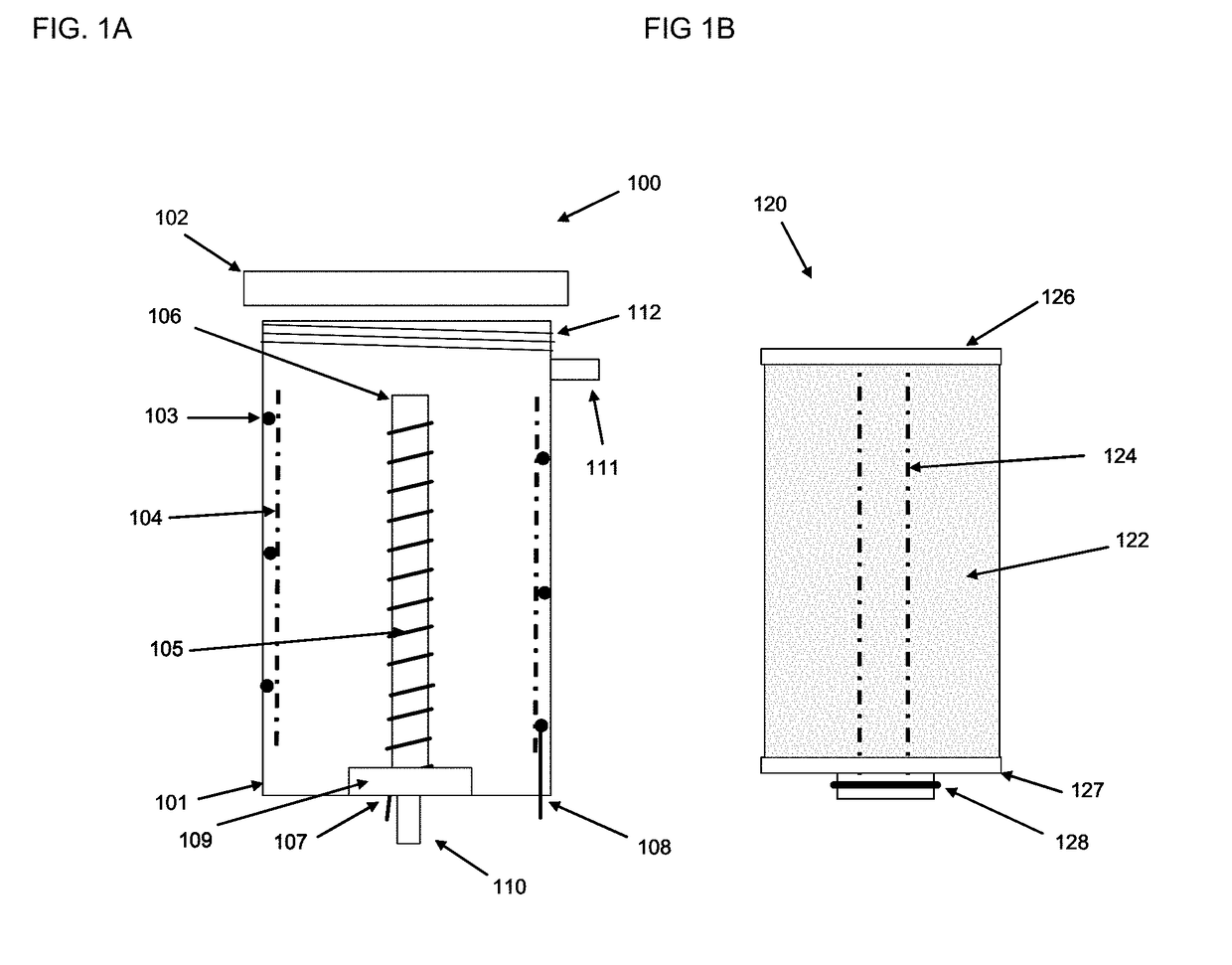Electrochemical Ion Exchange Treatment of Fluids
- Summary
- Abstract
- Description
- Claims
- Application Information
AI Technical Summary
Benefits of technology
Problems solved by technology
Method used
Image
Examples
example 1
[0095]An incoming solution was prepared from calcium chloride, sodium bicarbonate and magnesium sulfate having a conductivity of 950 S / cm. This was deionized in four experiments employing increasing service volumes by a LINX® 140 drinking water system, produced by Pionetics® Corporation, which comprises two small LINX 100 TDS cartridges prepared with textured bipolar membrane (LINX and Pionetics are trademarks of Pionetics Corporation). Service volumes of 6, 12, 18 and 24 liters were continuously deionized at 1.9 liters / minute until 2.0 liters before the deionization step is programmed to finish (and regeneration to begin), when deionization flow and power are shut off for 3 minutes. 2.0 liter volumes were collected and their conductivities recorded. After the 3 minute interruption, deionization flow and power resume with the collection of four 0.5 liter volumes of production water which conductivities are also measured. The results are plotted in FIG. 7. The spike in conductivity ...
example 2
[0099]The transformer's magnetic core is fabricated from stamped electrical steel sheets, approximately 0.8 mm thick. In a preferred embodiment illustrated in FIG. 8 the core is formed as a rectangle, having outside dimensions (from the perspective of FIG. 8) of 40 cm tall×22 cm wide and a core cross-section of 7 cm×7 cm. The core material is procured in the form of stamped sleeves in two shapes, “C” and “E”, so that they interlock as they are laid one on top of the other as is the standard procedure for assembling transformer cores. The sleeves are stamped such that the steel grain direction is parallel to the magnetic flux orientation. This cross-sectional area provides a suitably uniform flux distribution and size for the subsequent winding around the rectangular core of two primary and two secondary coils as shown. This structure is in sharp contrast to the conventional design for a low frequency transformer in which both the primary and secondary coils are wrapped around a cent...
PUM
 Login to View More
Login to View More Abstract
Description
Claims
Application Information
 Login to View More
Login to View More - R&D
- Intellectual Property
- Life Sciences
- Materials
- Tech Scout
- Unparalleled Data Quality
- Higher Quality Content
- 60% Fewer Hallucinations
Browse by: Latest US Patents, China's latest patents, Technical Efficacy Thesaurus, Application Domain, Technology Topic, Popular Technical Reports.
© 2025 PatSnap. All rights reserved.Legal|Privacy policy|Modern Slavery Act Transparency Statement|Sitemap|About US| Contact US: help@patsnap.com



